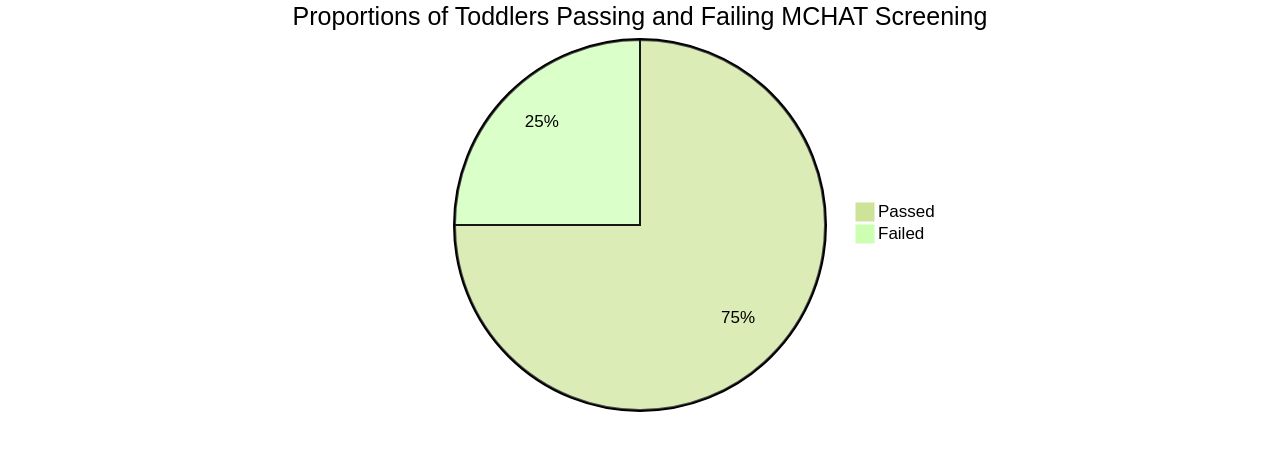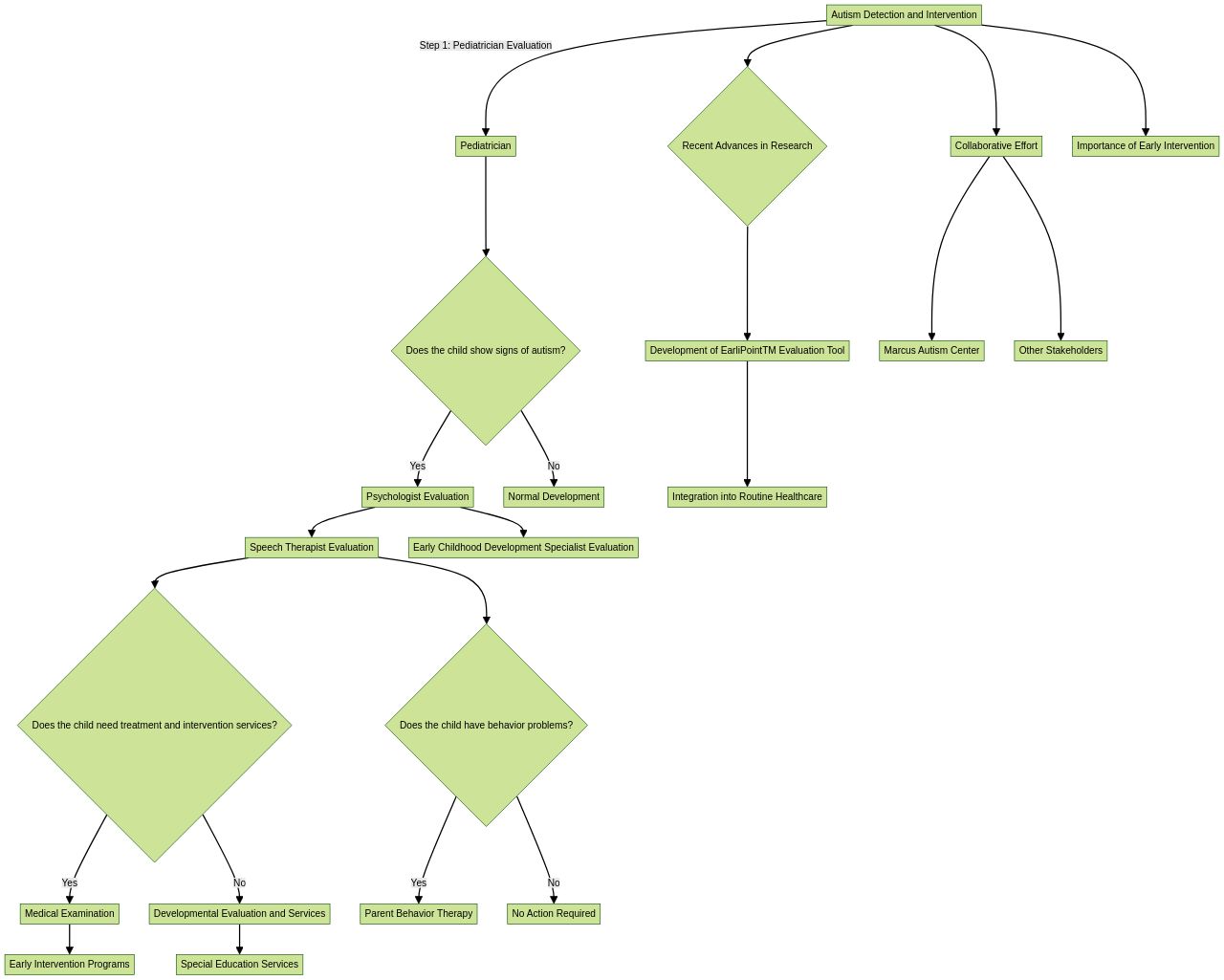Introduction
Routine screenings, such as the MCHAT, play a crucial role in the early detection of autism in toddlers. These screenings can identify developmental delays and red flags as early as 12-14 months of age, connecting children and their families to necessary support and services sooner.
However, understanding the purpose and administration process of the MCHAT screening tool is essential for generating reliable results. Implementing regular screening practices and providing education and support to parents and caregivers are also key in ensuring accurate completion and early intervention. Collaboration with a multidisciplinary team further enhances the early detection and intervention of autism, offering hope for better futures for affected children and their families.
Understand the Purpose of MCHAT Screening
Routine screenings, such as the MCHAT, are crucial in the early detection of autism, particularly in toddlers. When implemented during regular health check-ups, these screenings can potentially identify developmental delays and red flags as early as 12-14 months of age.
This early detection can significantly impact the lives of children and their families, connecting them to necessary support and services sooner. In fact, research has shown that incorporating autism screening into routine healthcare can alter the trajectory of a child's development.
For instance, a study showed that 80% of randomly selected 18-month-old toddlers passed all items on the CHAT screening tool, and none failed more than one item. However, four children in the high-risk group failed two or more key behaviors, receiving a diagnosis of autism by 30 months.
Understanding the purpose and implications of MCHAT screening allows for an appreciation of its role in early autism detection. As autism is known to have strong genetic risk factors, early detection and intervention can provide valuable insights into the development of this neurodevelopmental disorder. However, remember that online screening tools are not diagnostic instruments. Sharing the results with your child's healthcare provider is strongly encouraged.

Learn the Administration Process
Effectively employing the MCHAT screening tool isn't simply about administering the questionnaire. It's about understanding the intricate details of the process, knowing how to converse with parents and caregivers, and ensuring the screening tool is correctly completed.
By grasping the nuances of the administration process, we can generate reliable and meaningful results. For instance, in a program that screened over 21,000 women for breast cancer in its first 1.5 years, the decentralization and acceleration of diagnostic services led to nearly 1,000 women being referred for further tests.
Such an approach emphasizes the importance of bringing healthcare services closer to communities, empowering more individuals to seek early screening and potentially catching conditions while they're still treatable. In the same vein, research from Shandong University shows that opportunistic low-dose CT lung cancer screenings can reduce mortality by nearly 50%.
This exemplifies the power of early detection and the need for comprehensive screening strategies. Moreover, Dr. Jeffrey Brosco, a pediatrician at the University of Miami, highlights the importance of newborn screening programs as a model of public health activity. The aim is to detect serious medical conditions in infants before clinical symptoms appear, allowing for early intervention and improved outcomes. In light of these examples, it's clear that a thorough understanding of the administration process and the ability to effectively communicate with parents and caregivers is vital to ensuring the accurate completion of the MCHAT screening tool. This, in turn, aids in the early detection and treatment of potential health concerns, ultimately enhancing the wellbeing of children.
Implement Regular Screening Practices
The significance of consistent MCHAT screening cannot be overstated. Regular screenings are a key element in not overlooking any potential autism indicators. It's not just about identifying the signs - it's about understanding them, and knowing the next steps to take.
Early detection and intervention can be significantly increased by incorporating MCHAT screening into routine well-child visits or developmental check-ups. It's essential to remember that autism is a spectrum disorder, meaning the type and severity of symptoms can vary widely. Therefore, a comprehensive screening process is crucial.
Today, research has provided new tools and strategies for early autism detection and rapid referral, making it possible to identify early signs of autism in children as young as 12–14 months. This integration of early autism screening into routine healthcare is an evolving story, reflecting the continuous efforts of researchers and clinicians to translate science into practice. Ultimately, these efforts aim to connect children and families with support and services as early as possible, fostering a sense of community and reducing feelings of isolation.

Provide Education and Support to Parents/Caregivers
In the realm of healthcare and education, equipping parents and caregivers with the right understanding and support for MCHAT screening is of paramount importance. It's essential to demystify the screening's purpose, alleviate any fears or misunderstandings, and lay out appropriate next steps should a child test positive.
Parents and caregivers, once empowered with knowledge and support, can confidently navigate this process. Regular visits to the pediatrician often involve a series of questions about a child's eating, sleeping habits, and developmental milestones.
Recently, these questions have begun to include indicators of early signs of autism. Autism, a neurodevelopmental disorder, affects interaction, communication, behavior, and learning and presents a spectrum of symptoms.
Early signs of autism can now be detected in children as young as 12–14 months, thanks to research on routine screenings during well-baby checkups. This practice, backed by the National Institute of Mental Health, has proven to significantly aid children and families by connecting them to support and services at the earliest. In San Diego County, researchers worked with 203 pediatricians to create a standardized process and digital platform for autism screening during 12-, 18-, and 24-month well-child visits. These advancements have increased the rate of referrals for further evaluation and expedited the transition from screening to evaluation and services.

Collaborate with a Multidisciplinary Team
The journey towards early autism detection and intervention is a collective effort involving a diverse team of experts, including pediatricians, psychologists, speech therapists, and early childhood development specialists. The objective is to provide a holistic approach to managing autism.
Recent advances in research are unveiling novel detection tools, service models, and strategies to integrate rapid autism screening and referral into routine healthcare. This shift has seen healthcare providers posing more questions during pediatric visits aimed at identifying early signs of autism.
The spectrum nature of autism necessitates this comprehensive approach. A major stride forward has been the development of the EarliPointTM Evaluation tool, authorized for use in children aged 16-30 months.
This tool measures children’s looking behavior, providing objective data on the child's strengths and vulnerabilities. Studies have validated its use in early autism diagnosis, showing that these measurements align with expert clinician assessments with high accuracy. This tool paves the way for early intervention, which is crucial for improved outcomes and reduced lifetime costs for families. Furthermore, the Marcus Autism Center, supported by research grants, community support, and government funding, is dedicated to maximizing the potential of children with autism and transforming the nature of autism for future generations. Through this collaborative effort, we can enhance the early detection and intervention of autism, offering hope for better futures for affected children and their families.

Conclusion
In conclusion, routine screenings like the MCHAT are crucial for early autism detection in toddlers. By implementing these screenings during regular check-ups, developmental delays can be identified as early as 12-14 months of age, connecting children to necessary support sooner.
Understanding the purpose and administration process of the MCHAT is vital for generating reliable results. Implementing regular screening practices and providing education and support to parents and caregivers are key in ensuring accurate completion and early intervention.
Collaboration with a multidisciplinary team enhances early autism detection and intervention, offering hope for better futures for affected children and their families. By following these guidelines, we can ensure the well-being of children by detecting autism early and connecting them to necessary support services. Let us continue striving towards improved outcomes in autism detection and intervention, fostering a sense of community along the way. Together, we can make a difference in the lives of children with autism.




